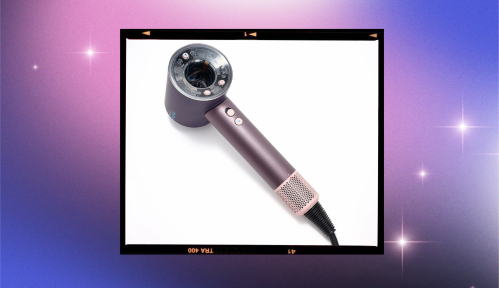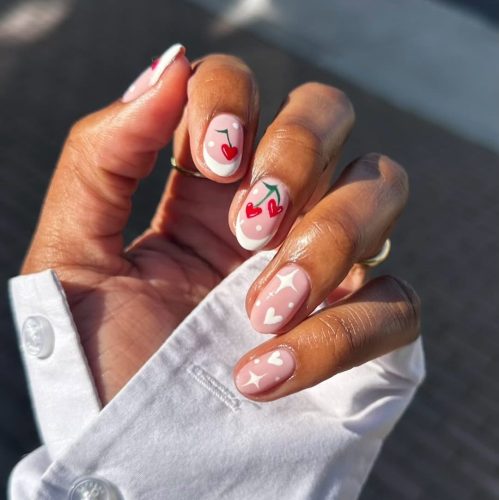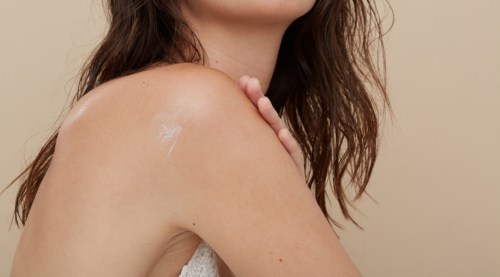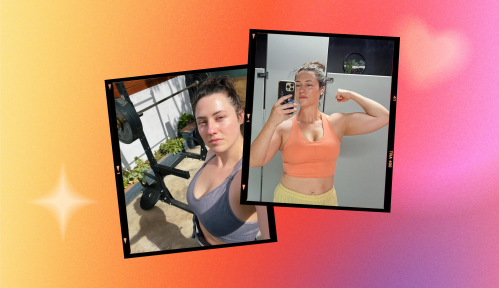I’ve struggled with acne and hyperpigmentation for as long as I can remember. Over the years, I’ve cycled through every treatment I could find—acne medications, vitamin C serums, liquid exfoliants, retinoids—hoping to fade the dark spots and smooth the uneven texture left behind. Still, nothing seemed to make a lasting difference. That’s when my dermatologist suggested I look into professional treatments, specifically the pico laser.
Pico lasers work by delivering super-quick pulses of light into your skin to break down excess pigment into tiny pieces for your body to eventually reabsorb. It’s one of the safer laser options to use across all skin tones and skin types, thanks to its lack of inflammatory heat. But would it be right for me? To find out more about the benefits and risks of the pico laser, I spoke with board-certified plastic surgeons Dahlia Rice, MD, founder of DMR Aesthetics; and Eunice Park, MD, founder of Airem Beauty Rituals.
What is a pico laser?
According to Dr. Rice, a pico laser is a type of laser that emits light in extremely short bursts, measured in picoseconds—i.e., one trillionth of a second. “This advanced technology allows for precise targeting of pigments in the skin, breaking them apart without damaging surrounding tissue,” she says. Pico laser treatments gained popularity in Korea because of their ability to even out skin tone and texture, making way for the glass-skin trend. “They allow for effective treatment of various skin concerns across a range of skin types compared to traditional lasers,” says Dr. Park.
How does a pico laser work?
“A pico laser works by breaking down targeted pigments into tiny particles,” says Dr. Park, adding that these “particles” then get naturally eliminated by your body’s immune system. “The laser’s energy also stimulates collagen production, which improves skin texture and reduces the appearance of fine lines and wrinkles,” she says.
Pico is different from other lasers because of its short, rapid pulses. “Because these pulses are so short, they minimize heat damage to the skin, leading to faster healing and less discomfort,” Dr. Rice notes. Pico lasers are especially beneficial because they’re very customizable. “You can adjust the wavelength settings and energy intensity to target specific skin issues, skin types, and treatment areas, and the spot size, which allows you to target larger or smaller treatment areas,” she says.
Are all pico lasers the same?
There are also a few different types of pico lasers with various wavelengths—your dermatologist might recommend a particular one depending on the thickness and coloration of what you’re trying to remove (i.e., you might need a different laser if you’re removing a tattoo vs breaking down acne marks). “PicoSure is often used for pigmentation, acne scars, and tattoos, while PicoWay is known for its multi-wavelength versatility, which is especially useful for melasma and tattoos,” says Dr. Rice. She also mentions Discovery Pico, which works on pigmentation, scars, and tattoos, along with Cuter Enlighten, a multi-wavelength pico laser used for pigmented lesions.
What can a pico laser treat?
Pico lasers can treat a spectrum of skin discoloration and texture, including acne scars, melasma, hyperpigmentation, and even tattoos. Here’s a quick overview of what to expect:
Pigmentation
Pico laser treatments can address sunspots, age spots, freckles, and melasma, according to Dr. Park. “You’d use a specific wavelength—532nm—for superficial pigmentation, and a different, more potent wavelength—1064nm for deeper pigmentation,” says Dr. Rice. You would likely receive 3-5 sessions to see significant improvement in hyperpigmentation, and results can start to show after the first couple of treatments.
Acne scars
“Pico also reduces the appearance of both ice pick and boxcar acne scars,” says Dr. Park. This means if you have deep indentations due to acne, or long-lasting discoloration due to old pimples, you may be a great candidate for pico laser treatment. Pico for acne scars requires 3-5 sessions that are usually spaced 4-6 weeks apart to allow proper healing. “For deeper scars, multiple passes may be required during each session,” says Dr. Rice.
Tattoos
According to the experts, pico laser treatments are also suitable for tattoo removal. “Pico lasers can effectively remove tattoos of all colors,” Dr. Park notes. The number of sessions needed depends on the size, color, depth, and age of the tattoo. “On average, it takes 6-12 sessions for full tattoo removal, spaced out about 6-8 weeks apart. Older or multi-colored tattoos might require more sessions,” says Dr. Rice. Additionally, treating tattoos can take up to 40 minutes (as opposed to 15-30 when targeting discoloration), and might require fewer passes, but more sessions due to the density of the ink.
Skin texture and wrinkles
Pico lasers can improve uneven skin tone and texture, whether it be from deep acne scars to fine lines and wrinkles. “Pico lasers can help rejuvenate the skin by stimulating collagen production, which will reduce the appearance of uneven texture,” says Dr. Rice. Depending on the area and severity, pico laser treatments for wrinkles and texture may take around 20 to 40 minutes, with fewer passes, but possibly more sessions as well to stimulate collagen and smooth out texture over time.
Benefits of pico lasers
Compared to other lasers that also address wrinkles and pigmentation like fractional CO2, Erbium YAG and Fraxel, pico laser treatments include minimal downtime, fewer treatment sessions, and the ability to treat a variety of skin types and conditions. “Pico lasers represent a significant advancement in nonsurgical dermatological treatments, especially for those with increased risk of post-inflammatory hyperpigmentation on deeper skin types,” says Dr. Rice.
It’s also important to note that the precision of the pico laser reduces the risk of damage to surrounding tissues, which results in quicker recovery times. According to the experts, patients often see significant improvements in their skin’s appearance after just a few sessions.
Risks of pico lasers
While pico lasers are generally safe, there are some potential side effects like redness, swelling, temporary darkening or lightening of the treated area, and scabbing. “These side effects are generally mild and temporary, and typically subside within a few days,” says Dr. Rice. Like other cosmetic procedures, it’s important to ensure that your treatment is performed by a qualified and experienced provider to minimize risks.
What can you expect during a pico laser appointment?
A pico laser appointment usually lasts between 15 to 40 minutes, depending on the area being treated. Your provider will first prep the skin by cleansing it and applying a numbing cream. Next, they will deliver laser pulses to the target area. The number of passes will depend on what you’re trying to remove—tattoos and wrinkles may take fewer passes, but might require multiple sessions, while acne scars and hyperpigmentation might require more passes, with fewer sessions.
During treatment, Dr. Rice describes the pain as similar to snapping a rubber band against the skin, so it’s a little uncomfortable, but the experts assure that it’s not painful. To finish, a soothing aftercare gel, balm, or ointment will be applied. “Patients can usually resume their normal activities immediately after the session,” says Dr. Rice.
How to care for your skin after a pico laser
The experts share that proper aftercare is key to optimal results. “I recommend keeping the treated area clean and moisturized, to avoid sun exposure and to use and reapply SPF,” says Dr. Park. She also recommends avoiding harsh skincare products like exfoliants and retinol (try for at least a week) and following any specific instructions from your provider.
How long do pico laser results last?
“The results of pico laser treatments can be long-lasting, but this can vary depending on the condition being treated and your skin type,” says Dr. Rice. For example, for issues like tattoo removal, the results are permanent after several sessions depending on the size and color. For skin rejuvenation and pigmentation treatments, Dr. Rice says that maintaining results may require follow-up sessions. Once you complete the recommended amount of sessions—which is typically around 3-5—you’ll see permanent results on the specific areas you treated.
How much does a pico laser cost?
The cost of pico lasers depends on several factors, including the treatment area, the number of sessions required, the location, and the provider. “On average, each session can range from a few hundred to over a thousand dollars,” says Dr. Rice. Like always, it’s best to consult with your board-certified dermatologist or plastic surgeon to determine if pico is right for you.
Final takeaway
Pico lasers emit rapid pulses of laser energy to the skin that work to rid of uneven skin tone and texture. They also work to encourage collagen production and are suitable for all skin types and tones. According to studies, they are highly effective in removing age spots, sun spots, acne scars, wrinkles, and tattoos. The pico laser itself is extremely precise, which minimizes the risk of damaging surrounding tissue during treatment.
The procedure can take up to 40 minutes and may require follow-up sessions depending on the area and level of pigmentation targeted. Pico lasers can cost anywhere from a few hundred to a few thousand dollars per session, depending on your skin type and needs. Post-procedure, it’s recommended to follow instructions provided by your treatment provider and to maintain a consistent skincare routine. “Pico lasers offer effective solutions with less downtime and fewer risks compared to older laser technologies,” says Dr. Rice. In fact, it might just rid me of the ghost of my acne’s past.
Sign Up for Our Daily Newsletter
Get all the latest in wellness, trends, food, fitness, beauty, and more delivered right to your inbox.
Got it, you've been added to our email list.










